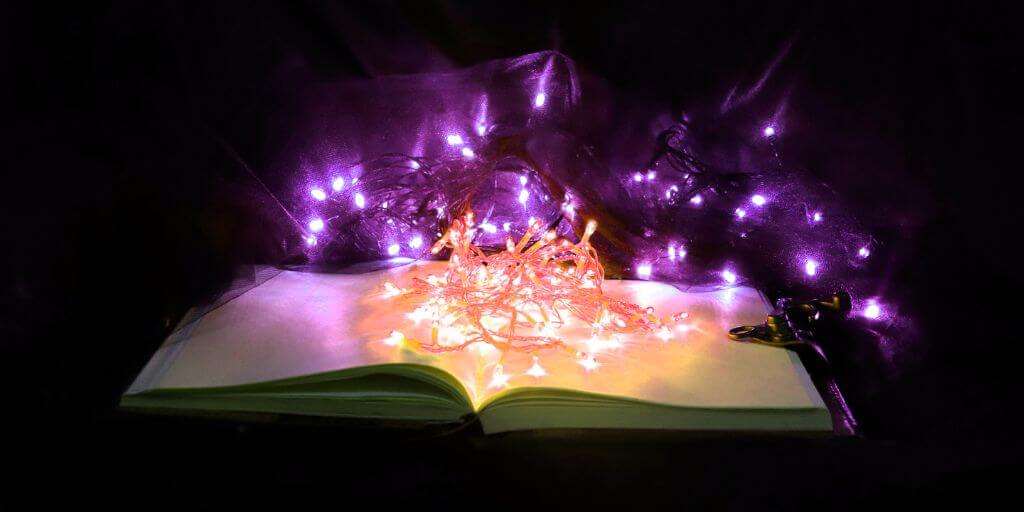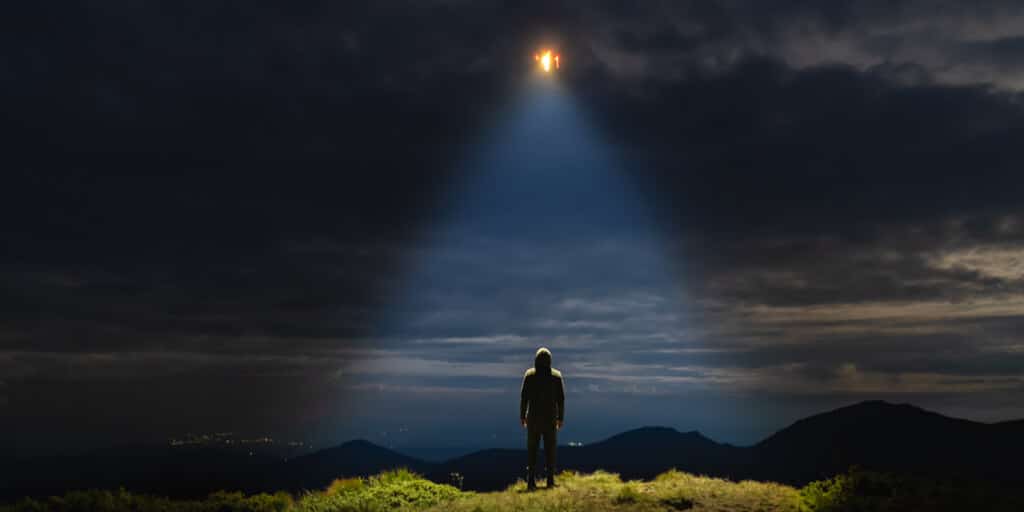Psychics and Mediums—Part 2: Understanding Spiritism, Channeling, and Spirit Guides

In Part 1 of this article, I provided a basic summary of the occult, the paranormal, divination, psychics, trance states, and mediums. In the present article, I will continue along these same lines with a brief assessment of spiritism, channeling, and so-called spirit guides.
Spiritism
Spiritism affirms the continued existence of human personalities beyond death and the ability to communicate with them. Spiritism, the name given to the religion that focuses on communication with the dead, has always received significant attention during and after times of war. In these cases, there is a strong desire among the living to establish communication with their deceased loved ones who perished in the war.
Some psychic mediums believe that these spirits on the other side are actively seeking to communicate with their living loved ones. One of these psychic mediums is Char Margolis:
Death is almost always a difficult time for those of us who are left behind. But it is also the most common time for our loved ones to communicate with us from the other side. It’s as if their spirits wanted to reassure us they are all right and still love us very much. These communications can come in the form of feelings, noises, strange experiences, “coincidences” that are too striking to be accidental, and so on. [1]
Christian scholar Kenneth Boa observes that in the spiritist worldview, there are escalating levels of existence. Spiritists believe that as spirits evolve through higher and higher spiritual planes (or levels) in the afterlife, it becomes increasingly difficult to communicate with them:
There are allegedly several planes of spiritual existence, and each spirit must progressively ascend to higher “heavens.” As the spirit attains higher circles or spheres on the way to perfection, it gets less interested in the earthly sphere. Thus it becomes more difficult to communicate with the spirit as time goes on. Each new sphere is farther from the earth.[2]
Occultists conclude that the most opportune time to communicate with deceased loved ones is shortly after their death. The “freshly dead” are allegedly easier to contact.
Spiritism, also known as spiritualism, is one of the oldest religions in history, with a presence in various civilizations throughout time. Records of mediums appear in historical accounts from various sources, including the Bible and writings found in ancient societies such as the Egyptians, Babylonians, Chinese, and Greeks.
The modern “spiritualist movement,” which involved spiritism, originated in 1848 at the home of farmer John Fox in Hydesville, New York. Fox’s daughters, Margaret, Leah, and Catherine, reported hearing rapping sounds in the house that they interpreted as messages from spirits. They claimed to be communicating with the spirit of a murdered man named Charles Rosma. These sisters gained considerable influence within the spiritualist movement until 1886, when Margaret admitted to deceit. She confessed that the rapping sounds were caused by the cracking of her toe joints, although she later retracted this confession. Despite the initial confession, the momentum of spiritism in American society remained strong.
Channeling
Channeling is a New Age term that refers to old-time spiritism. Channeling may be defined as “the practice of attempting communication with departed human or extra-human intelligences (usually nonphysical) through the agency of a human medium, with the intent of receiving paranormal information and/or having direct experience of metaphysical realities.”[3] According to medium Sylvia Browne, “the communicating spirit never possesses, replaces or eliminates the spirit of the channel. Instead, the channel simply withdraws or steps aside temporarily and acts as nothing more than a tube through which the communicating spirit can speak directly.”[4]
Sometimes channelers connect with the Great Beyond in a light trance and sometimes in a deep trance. While in a deep trance, the channeler is in an altered state of consciousness and is typically unaware of his surroundings. When the channeler emerges from the trance, he or she often has no memory of what happened. Channelers who connect with spirit entities while in a light trance are typically still aware of their surroundings and continue to operate in a conscious, albeit altered, state.
John Ankerberg and John Weldon address what typically occurs during a deep trance channeling session:
When a channeler goes into a full trance, it is as if he is falling backward into a deep sleep. Both his facial muscles and lips twitch as the invading spirit begins to gain control over the person. Once the spirit is in possession of the body, changes in breathing occur and the person’s facial features and expressions are different, sometimes greatly different (for example, the late Jane Roberts). What can be most noticeable is when the voice changes; for example, a feminine voice becomes deep and masculine.[5]
During the session, the channeler enters into an unconscious state and has no recollection of what has transpired once the spirit entity has left the body. The spirit exerts such control over the deep trance channeler that he becomes akin to a puppet manipulated by a higher force.
Some channelers do not interact with spirit entities but instead claim the ability to access the Akashic Records. These “records” are believed to be an energy field surrounding the earth that stores information about all past events on earth. Certain psychics claim to be able to “read” the Akashic Records to gain hidden knowledge about the past. Notable individuals with this alleged psychic ability include Edgar Cayce and Levi Dowling.
Spirit Guides
Many contemporary psychics claim that every person possesses psychic abilities and is connected to a spirit guide who provides guidance from beyond and supports them throughout life. Some psychics claim direct communication with their guides, while others describe their presence as a subtle intuitive sense—like a hunch.
A common explanation for spirit guides is rooted in the concept of reincarnation. When a person dies, they are said to go to the “Other Side,” where they interact with other spirits. After an indeterminate period of time, which could be decades or centuries, these spirits reincarnate into new human bodies.
During their time as disembodied spirits on the Other Side, individuals can choose someone to serve as their spirit guide in their next incarnation on earth. As psychic Sylvia Browne explains, “Every one of us has a Spirit Guide, someone we literally trusted with our soul on the Other Side, who agreed to be our constant, vigilant companion and helpmate when we made the choice to experience another lifetime on earth.”[6] This guide could be a family member, a friend, or someone else close to us. Browne claims that because these spirit guides have already experienced life on earth, they can empathize with the challenges, temptations, fears, and vulnerabilities that humans commonly face. At some point, everyone takes on the role of a spirit guide for someone else.
Psychics claim that before reincarnating, individual souls, while on the other side, create a blueprint for their upcoming new life on earth, outlining the lessons they wish to learn. If the individual strays from this chosen path, their spirit guide supposedly intervenes to bring them back on track by aligning their experiences with the original blueprint.
It is quite clear that psychic enthusiasts have an occult worldview that encompasses all of life. This is one of the reasons for its current popularity. We will find more evidence of this in the final article of this series.
In Part 3 of this article, I will examine how psychics perceive and even contact so-called “ghosts.” I will consider seances, clairvoyance, clairaudience, clairsentience, psychometry, crystal balls, automatic handwriting, out-of-body experiences, levitation, telekinesis, materializations, transfigurations, ectoplasm, and spirit photography.
I also invite you to consult my article, “A Christian Assessment of Psychics and Ghosts,” posted here at the John Ankerberg Show website.
Go Deeper
- Iran, Israel and End Time Events – 2 DVD’s 3 Books – Package Offer
- Northern Storm Rising – Book
- The End of America? – Book
- Char Margolis, Questions from Earth, Answers from Heaven (New York: St. Martin’s, 2000), p. 196. ↑
- Kenneth Boa, Cults, World Religions, and You (Wheaton: Victor Books, 1986), p. 132. ↑
- Elliot Miller, A Crash Course on the New Age Movement (Grand Rapids: Baker, 1990), p. 141. ↑
- Sylvia Browne with Lindsay Harrison, Phenomenon (New York: Dutton, 2005), p. 60. ↑
- John Ankerberg and John Weldon, Cult Watch (Eugene: Harvest House Publishers, 1991), p. 174. ↑
- Browne, Phenomenon, p. 266. ↑








